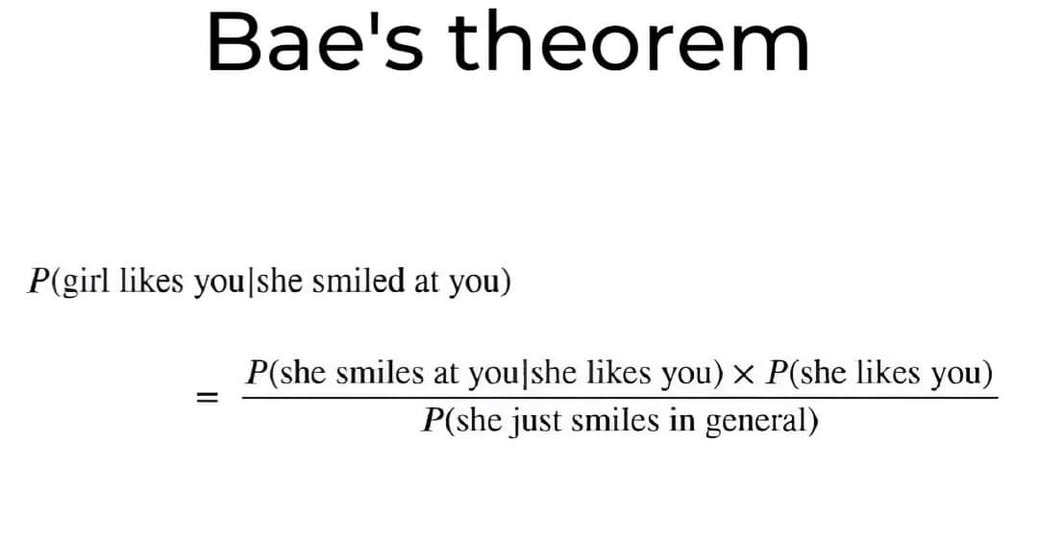unfortunately, P(she likes you) ≈ 0
Science Memes
Welcome to c/science_memes @ Mander.xyz!
A place for majestic STEMLORD peacocking, as well as memes about the realities of working in a lab.

Rules
- Don't throw mud. Behave like an intellectual and remember the human.
- Keep it rooted (on topic).
- No spam.
- Infographics welcome, get schooled.
This is a science community. We use the Dawkins definition of meme.
Research Committee
Other Mander Communities
Science and Research
Biology and Life Sciences
- [email protected]
- [email protected]
- [email protected]
- [email protected]
- [email protected]
- [email protected]
- [email protected]
- [email protected]
- [email protected]
- [email protected]
- [email protected]
- [email protected]
- [email protected]
- [email protected]
- [email protected]
- [email protected]
- [email protected]
- [email protected]
- [email protected]
- [email protected]
- [email protected]
- [email protected]
- [email protected]
- [email protected]
- !reptiles and [email protected]
Physical Sciences
- [email protected]
- [email protected]
- [email protected]
- [email protected]
- [email protected]
- [email protected]
- [email protected]
- [email protected]
- [email protected]
Humanities and Social Sciences
Practical and Applied Sciences
- !exercise-and [email protected]
- [email protected]
- !self [email protected]
- [email protected]
- [email protected]
- [email protected]
Memes
Miscellaneous
So you’re saying there’s a chance?
Given P(she smiles at you | she likes you) is approximately 1
Assuming P(she likes you) > 0
Then we can sub into
P(she likes you | she smiles at u) = (P(she smiles at you | she likes you) * P(she likes you))/P(she smiles in general)
To get P(she likes you | she smiles at u) = x/P(she smiles in general)
Where x is some number between 0 and 1
Therefore we can conclude the more she smiles the less likely its cos she likes you. Therefore find the oens who dont smile and get em to smile. Therefore bigtiddygothgf.
Nice, we can also assume that P(she smiles at you | she likes you) is approximately 1, simplifying to only 2 variables, and also substitute P(you are likable) for P(she likes you) to remove all unknowns.
and also substitute P(you are likable) for P(she likes you)
That seems like a pretty wild leap of logic. Being likeable in general isn't a substitute for a specific person liking you. Though there's probably a correlation related to your overall "likeability score".
So you're saying further research is needed to constrain P(she likes you|you are likeable)?
Damn you priors
So lowest denominator possible (rarely smiles)?
I'd be a lot less confused by a Venn diagram.

